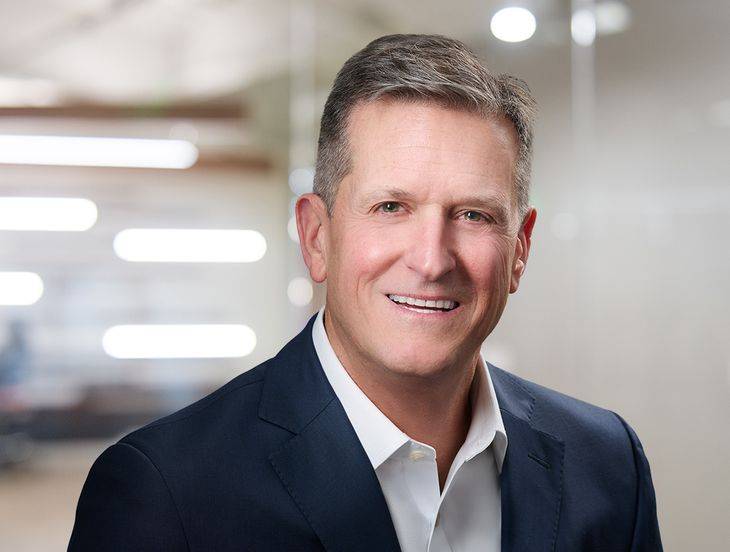Harris v. Trump: The Definitive Workplace Law Preview for Employers
Insights
9.12.24
Either Kamala Harris or Donald Trump will be our nation’s next president – and the impact on workplace law will be significant regardless of who prevails. During their campaign trails, each candidate has provided some clues on their plans for labor and employment issues, but perhaps more telling is their own records from their stints in the White House and beyond. Will the pattern of policy reversals every four years continue with a second Trump term, causing employers more whiplash but less governmental oversight? Or will Vice President Harris carry the torch of the Biden administration (or at least continue in that same general direction as she seeks to pave her own path), providing greater continuity but also increased regulatory burdens? While campaign promises are not always kept and each candidate reserves the right to alter course once in office, we can offer some general ideas about what workplace law could look like in 2025 and beyond. And make sure to visit our Election Season Resource Center for Employers to review all our thought leadership and practical resources for employers.
Labor Relations
Both leaders are making appeals to organized labor on the campaign trail, perhaps more so than in any previous recent election cycle (read more about the role unions played at the parties’ conventions). But their past records reflect different stances that might reveal better clues to how the next four years would actually shape out. Here’s what they might do next:
Harris
- Would likely continue pursuing the current administration’s labor policies – which have sought to fulfill President Biden’s promise of being the “most pro-union president you’ve ever seen” – including making it easier for workers to collectively bargain with their employers (read here to learn more about some of the National Labor Relations Board’s most recent pro-labor moves).
- During her campaign trail, she’s promised to sign the Protecting the Right to Organize (PRO) Act, which President Biden has called on Congress to pass. If signed into law, the PRO Act could cause a seismic shift on the labor relations front and tilt the balance of power towards unions when it comes to the organizing process. Absent a Democratic sweep in the Congressional elections, however, it seems doubtful that enough Republicans would support this measure as currently proposed for it to ever make it to the President’s desk.
Trump
- Would likely take actions to limit the role of unions, just as he did during his former administration (such as rolling back the NLRB’s “quickie election” rule and issuing rules that had made it easier for workers to undo union representation). And Trump vowed in 2020 to veto the PRO Act if it were to pass Congress.
- Meanwhile, Trump’s running mate, Sen. JD Vance (R-OH), reintroduced a bill in January that would “give employees a voluntary opportunity to negotiate on their own terms and without fear of legal action or bureaucratic meddling, a practice currently prohibited by existing labor laws,” according to this press release.
Workplace Safety
- Harris: Would likely continue ramping up health and safety measures in the workplace. The Biden-Harris administration took steps to boost OSHA’s enforcement program and increased the number of inspectors in comparison to the previous administration – which has led to increased safety inspections (you can track these at FP’s exclusive OSHA Inspections Tracker here). The current administration also has made several major workplace safety moves, such as implementing an electronic recordkeeping rule, updating the “union walkaround” rule, and issuing a proposed heat safety rule that could take effect as soon as next year.
- Trump: Would likely reduce government oversight on safety issues in the workplace. The Trump administration cut the number of inspectors to the lowest amount in OSHA’s history, declined to mandate employers to take any protective measures against COVID-19, and rescinded part of the electronic recordkeeping requirements. Rather than mandating specific standards for different categories of potential workplace danger, you can expect a Trump-led OSHA to enforce safety concerns using the OSH Act’s General Duty clause.
Wage and Hour
Federal Minimum Wage
- Harris: Supports raising the federal minimum wage, though it’s not clear how high. In the past, she has commended states that implemented rates of $15 per hour, but she has not given any specifics during her current campaign trail.
- Trump: Not clear. During his 2020 campaign, he criticized the idea of increasing the federal minimum wage as harmful to small businesses. But the 2024 GOP platform on the Trump campaign’s website supports “raising wages” without providing further details.
Regardless of who is elected at the federal level, we can expect to see more states and localities implementing their own minimum wage hikes. The majority of states now have laws imposing minimum wages well above the federal $7.25 per hour rate – which was last increased in 2009 – and numerous counties and cities have enacted similar measures.
Overtime Pay
- Harris: Supports the latest federal overtime rule. The Biden-Harris administration dramatically extended overtime coverage to about 4 million more workers by raising the salary threshold for the so-called “white-collar” exemptions to about $44K on July 1 and to nearly $59k at the start of 2025. The new overtime rule is currently being challenged in courts, and if Harris were to win this November, her administration presumably would continue to defend the rule.
- Trump: Might support abandoning the new overtime rule – or issue a new one. In 2017, the Trump administration effectively ensured that an Obama-era overtime rule that aimed to significantly expand OT coverage never saw the light of day. It then issued a new overtime rule expanding overtime pay obligations but to far fewer workers than what the Obama rule would have done. If Trump were to win this November, he could potentially make a similar move to roll back the Biden-era change.
Tipped Wages (Hospitality Industry)
Both Harris and Trump said they would support legislation that ends federal income taxes on tips for hospitality workers. Supporters say such a move would help employees take home more pay without forcing hospitality employers to increase base wages in the face of high inflation and low margins. Critics, however, say income-tax-free tips may drive base wages down, encourage customers to tip less, and cause a revenue shortfall for the federal government.
These campaign promises are a long way from becoming law, but they have bipartisan support, and we’ve already seen some movement in Congress on this issue. You might want to start thinking about how this change could impact your wage structure, tip pooling, policies on employees reporting the tips they receive, and other pay policies. And you also should be tracking legislative developments at state and federal levels regarding tip-credit rules and taxes on restaurant service fees.
Gig Economy
- Harris: Would make it harder for businesses to classify workers as independent contractors. As mentioned above, she’s promised to pass the PRO Act, which as currently written would also expand the definition of “employee” under federal labor law to capture workers who are currently classified as independent contractors. And the Biden-Harris administration has made other key changes on this front, tilting the playing field to make it more difficult for businesses to classify workers as contractors (click here and here for examples).
- Trump: Would likely make it easier for businesses to classify workers as independent contractors. Just weeks before President Biden took office in 2021, the Trump administration’s DOL finalized a new rule that would have accomplished this objective – but then the Biden DOL froze it without it ever taking effect. Trump’s current campaign has not yet provided any specifics for how his administration would approach the issue in 2025.
Pay Equity
- Harris: Has not mentioned anything specific during her current campaign. While the Biden-Harris administration announced several equal pay initiatives this year (see, for example, these White House statements here and here), we have yet to hear specific plans for what Harris would do in this area should she capture the White House. The Equal Employment Opportunity Commission has already announced it seeks to revive “Component 2” pay data collection as part of your annual EEO-1 submission, and it is likely Harris would support such a proposal. It’s also worth noting that Harris’s running mate, Minnesota Gov. Tim Walz, signed a pay equity and transparency bill into law this past May.
- Trump: Would likely not pursue new pay equity initiatives or would block them altogether. In 2017, the Trump administration dropped the revised EEO-1 report the EEOC is now seeking to revive. Officials cited concerns that the revised collection of information lacked practical utility, would be unnecessarily burdensome, and failed to adequately address privacy and confidentiality issues. It seems unlikely that his position would have changed on this proposal, especially given the trend against expansion of agency power we have seen take root in the past year.
Paid Leave
- Harris: Supports paid family and medical leave but hasn’t yet provided any detailed proposals during her current campaign. The Biden-Harris administration proposed a 12-week paid leave program, but the legislation ultimately failed to pass. Her running mate also supports paid leave – Gov. Walz signed a Minnesota paid leave bill into law earlier this year that will provide workers starting in 2026 with paid family and medical leave up to 12 weeks for each type of leave, for a combined maximum of 20 weeks per year.
- Trump: Not clear. Trump has so far stayed silent on the issue during his current campaign. However, he took a big step in 2020 by approving a law permitting federal employees to take 12 weeks of paid parental leave, and it’s possible that his current attempt at appealing to middle-class working voters could lead his administration to push for some sort of federal paid leave law.
Similar to the minimum wage, this is an area where many employers are already facing a multitude of local and state requirements. If the federal response to paid leave falls short in any respect, expect to see an increase in the number of jurisdictions that will impose a paid leave requirement on businesses operating in their area.
Immigration
- Harris: The Biden-Harris administration immediately halted many of the Trump-era immigration actions before partly reversing course after record high numbers of unlawful entries at the southern U.S. border. The Harris campaign platform calls for a reformed immigration system but provides few details apart from calling for an “earned pathway to citizenship.”
- Trump: Immigration reform was a centerpiece of the first Trump administration and had a major impact on foreign nationals and U.S. employers – including curtailing the reliance on highly skilled foreign workers, raising the bar for issuing employment-based green card applicants, and expanding penalties for employers who harbor undocumented workers. A second Trump term would likely be no different, according to his campaign platform.
Artificial Intelligence
- Harris: The Biden-Harris administration issued a sweeping AI executive order last year containing numerous items that could eventually impact the workplace. As Vice President, Harris gave remarks on the future of AI, including that she rejects “the false choice that suggests we can either protect the public or advance innovation” and that “we can and we must do both.”
- Trump: Trump’s campaign platform promises to repeal the Executive Order on Safe, Secure, and Trustworthy Artificial Intelligence, describing it as “dangerous” and a hinderance to innovation. He has not yet provided any details as to how he would approach AI issues – though he has spent a good deal of time appealing to tech leaders and seeking their campaign support, signaling an openness to fostering strong relations with the industry.
Conclusion
The bottom line is that whether we have a second term with President Trump or a new administration with President Harris, you can be sure that workplace law will see some substantial changes over the next four years.
We will continue to monitor developments as they unfold, so make sure you are subscribed to Fisher Phillips’ Insight System to receive updates directly to your inbox. Also make sure to visit our Election Season Resource Center for Employers to review all our thought leadership and practical resources for employers. If you have any questions, contact your Fisher Phillips attorney, the authors of this Insight, any member of the legislative advocacy team at FP Advocacy, or any member of our Government Relations team.
Related People
-
- Benjamin M. Ebbink
- Partner
-
- Rick Grimaldi
- Partner
-
- Braden Lawes
- Senior Government Affairs Analyst
-
- Lauren Laing
- Legal Content Counsel



